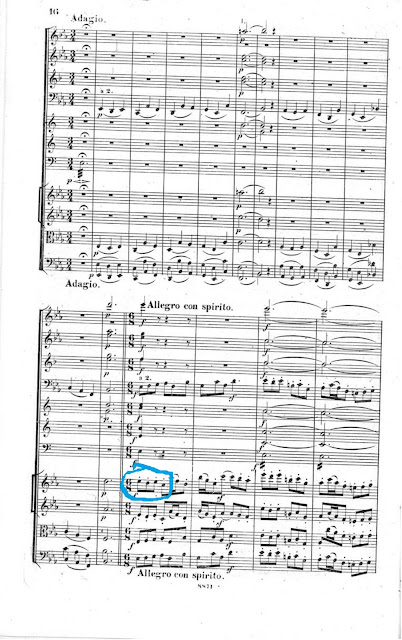CCCXXIV. HAYDN, Franz Joseph (1732-1809)
First Movement
After the timpani roll which gives the symphony its nickname, we have four consecutive notes which match the ancient Dies Irae chant:
Also notice how he writes the celli and bass an octave apart (in different directions), which produces the same pitch! [the bass sounds an octave below the written note.]
The ambiguous harmony in the opening ends on a held G, but Haydn bursts into the tonic key with the 6/8 Allegro:
From the remote key of D-Flat Major
which now contain the Dies Irae intervals!
Second Movement
It is no wonder the audience at the 1795 premiere demanded that this movement be repeated. It is delightful:
Third Movement
Nice movement to G-Flat Major before returning to E-Flat ...

For some reason, this conductor gives the melody in the violins to the clarinet. No creative license for that.

But much worse is that he takes all the repeats in the D.C. of the minuet. WTF?
- The theme frequently slips between minor
- and major;
- the trills and
- staccato add variety;
- clever orchestration, giving the bassoon the melody;
- and then a solo violin;
- finishing with great contrast: light strings, winds, followed by tutti, ending in C Major ...
Third Movement
Nice movement to G-Flat Major before returning to E-Flat ...

For some reason, this conductor gives the melody in the violins to the clarinet. No creative license for that.

Fourth Movement
Intoduced with a short horn call, the movement contains only one theme, repeated, but developed throughout with shifting harmonies and constantly changing orchestral sonorities.














No comments:
Post a Comment